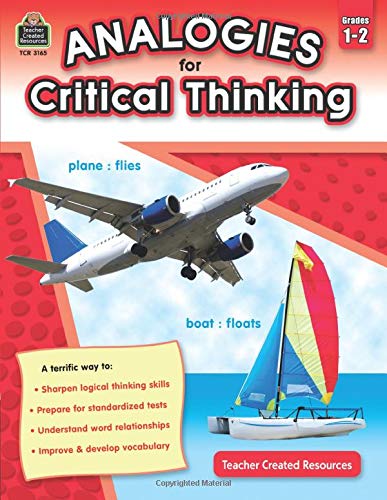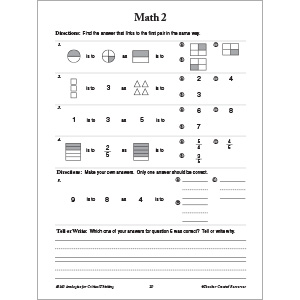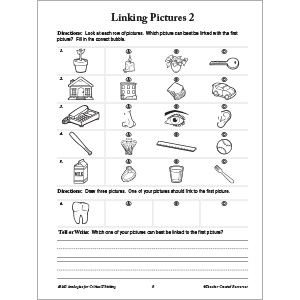Analogies for Critical Thinking Grades 1-2
With Analogies for Critical Thinking Grades 1-2, students will have fun flexing their critical-thinking skills by finding connections between two pairs of words.
As a Reading Teacher, I was seeking a way to help the students with inference skills and making connections to what they were reading. This was key to improving their comprehension skills. I have always been a believer in the concept of “teach them to think and they can learn anything,” which means teaching critical thinking. In looking into what was recommended for critical thinking in reading, I continually came across the mention of analogies. I began routinely completing analogies and it worked! To learn more about my 5 Proven Reading Strategies and how this skill played a role in my success and the success of my students, check out my article.
Students showed even more comprehension growth with the incorporation of these analogies. Understanding relationships naturally improved their reading comprehension and boosted their inferential (deductive) thinking skills. It caused them to begin to critically think about what they were reading and question it on a deeper level. This resulted in deeper understanding and comprehension.
Approach analogies as puzzles. To solve them, students need to use cognitive processes and critical-thinking skills.
Students will be able to demonstrate mastery by doing the following:
- working with both multiple-choice and write-out question formats
- analyzing and fixing incorrect analogies
- writing their own analogies in both question and sentence format
Analogies written for this series will focus on a variety of word relationships. They will develop, reinforce, and expand skills in the following areas:
- visual imagery
- reading comprehension
- paying attention to detail (word sequence within word pairs)
- vocabulary development
- synonym, antonym, and homophone recognition and recall
- understanding different shades of word meanings
- reasoning
- standardized-test taking
It is available for multiple grade levels – See below:
As an Amazon Associate, EDGEucating earns from qualifying purchases





Reviews
There are no reviews yet.